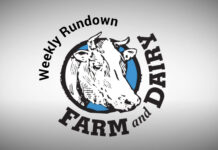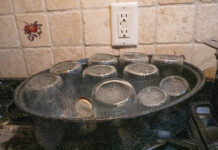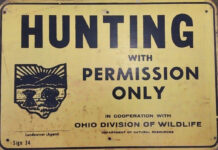By now, many of us have realized the benefits that selectively breeding a portion of our herds to beef bulls brings to the profitability of dairy operations. We have always seen beef calves bring a better price at the stockyards compared to their purebred dairy cousins, even when dairy beef has comprised a significant portion of the retail marketplace. Thanks to the fast food giants, ground beef has been the backbone of the beef industry for decades. The dairy industry has supported this demand from cull cows and a majority of the dairy steers are funneled to the ground beef supply chain. As beef-on-dairy crosses gain adoption, it has created opportunities for this product to make its way onto the grocery store shelves to successfully fill the gap left by a shrinking U.S. beef herd.
There are two key metrics in deciding if a beef carcass is worthy of becoming a steak or a hamburger patty on the center of the consumer’s plate: marbling and ribeye area. Purebred dairy steers are known to excel at their ability to marble. Their shortcomings have been that it can be difficult to achieve the 11-square-inch minimum ribeye area that restaurants desire, and the amount of time it takes to feed those steers to finish.
Also, the carcass weights of purebred dairy steers often exceed the equipment capabilities of most packing plants relegating their processing to a few facilities across the county. Multiple research studies have shown that beef crossed with dairy calves finishes quicker, has less harvest fat trim and averages a larger ribeye area, all with a more desirable carcass size than straight Holstein steers. In fact, some research has shown that beef X dairy crosses have shown better marbling and yield grade scores on average than straight beef steers.
The shrinking U.S. beef herd, coupled with strong demand, has created an explosion in live cattle prices. In my local market, beef calves still bring the top price, but beef X dairy calves are keeping pace. I think it is easy to say that most of the crosses are Holstein and Angus. Although I can’t say with 100% confidence, I am going to guess that the decision on which specific beef bull to use has been driven by the price of a straw of semen. At some point, cattle prices will decline and there may be a need to be more focused on the bulls you chose for your cross-breeding program.
Successful feeder calf marketing is as much about reputation as it is about the exact bull used to produce the calf. It may be to your advantage to target your bull selection criteria for generating these crosses now, to begin developing a reputation of providing high-performance calves when the market begins dictating that need.
As I have stated, the dairy part of the cross brings several positives to the paring. You need to select a beef bull that overcomes the known shortcomings to produce the most desirable carcass for the consumer.
We are fortunate that there is a lot of information available to help us base our bull selection decision. Although it will vary from breed to breed, there are on average 20 different Expected Progeny Differences (EPDs) that you need to contrast to select the bull that meets your needs.
Trying to find the right mix of EPD values can become daunting. To this end, producers should take advantage of the indexes offered by the respective beef breed associations. These indexes combine EPDs, relevant to a particular end point, to assign a comparative value for those calves. Some of the associations have developed indexes specific to beef-on-dairy crosses. The others will have indexes that assist in identifying bulls that could produce calves with traits more aligned with feedlot/carcass performance.
Using an index can help a producer sort through the available data, by having multiple EPD values condensed into a single number. While these are of great value, the producer needs to know exactly what EPDs are combined to create the index.
For example, the Angus Association’s Angus-On-Holstein index assumes the calves will be fed and marketed on a quality-based grid with a higher “dollar” value representing a greater profitability potential for that mating. It combines the EPDs for calving ease, growth from birth through the feeding phase, feed intake, dressing percent, yield grade, quality grade, muscling and height. The American International Charolais Association has a terminal sire index that combines birth weight, weaning weight, yearling weight, ribeye area, carcass weight, marbling and fat thickness to produce a similar dollar index reflective of the potential profitability of a sire’s calf in fed cattle situation.
In summary, beef-on-dairy crosses have benefited both dairy producers and the U.S. beef industry. The crosses increase the quality of the final product over their purebred dairy counterparts and will continue to demand a premium at market. When cattle markets do retreat, it will be important for dairy producers to be more selective of the beef bulls used in these crosses. Producers should look for bulls that provide calving ease, moderate carcass size and acceptable marbling potential while maximizing muscling and growth characteristics. Bull choice will also be influenced by marketing programs and the premiums they offer, but will ultimately be dependent on your ability to consistently produce a productive calf that achieves the desired endpoint targets of a hot carcass weight between 600 and 900 pounds, a yield grade of 3 or less, ribeye area of 11- to 15-square-inches and a quality grade of upper two-thirds choice or higher.













